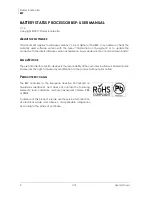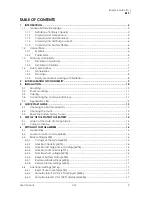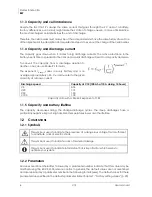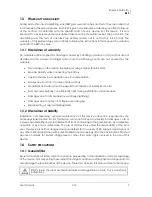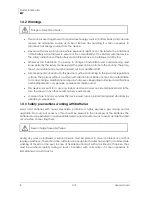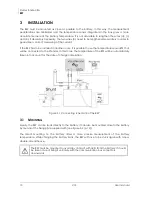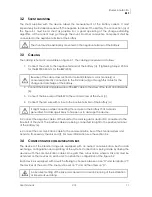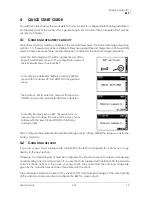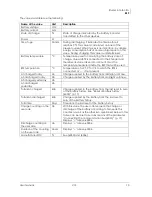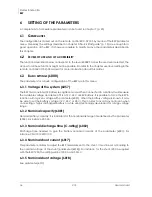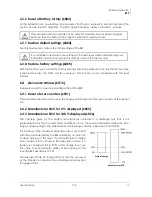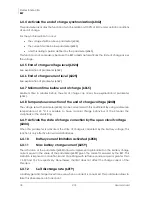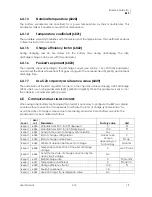
Studer Innotec SA
BSP
User manual
V1.3
5
1
INTRODUCTION
The BSP (Battery Status Processor) is designed to monitor lead-acid batteries when used together
with inverter-chargers from the Xtender series. An advanced algorithm provides the BSP with the
battery’s state of charge in real time in order to optimize its use.
The BSP offers voltage measurement for 12, 24 and 48 V batteries as well as current measurement
with a resistive shunt. By using the Xtender communication bus, the BSP is able to communicate
with the other devices in the system. It is possible to configure the BSP and to display its values with
the remote control RCC-02/-03.
Moreover, the Xtender inverter/chargers have the ability to adapt their functioning according to
the data given by the BSP.
1.1
G
ENERAL BATTERY KNOWLEDGE
Lead-acid batteries constitute energy storage with complex behaviour. They consist of a
collection of 2 Volt (V) cells connected in series to obtain a specific voltage. Depending on the
conditions, lead-acid batteries exhibit behaviour far more complicated than a tank that simply
fills and empties, due to different physical and chemical phenomena. For this reason it is more
difficult to precisely determine a battery’s state of charge than, for instance, that of a petrol
gauge.
The different values that affect a battery are described below.
1.1.1
Definition of battery capacity
A battery’s capacity is defined as the amount of electrical charge that a full battery can supply
at given current before reaching a certain voltage. Normally the unit Ampere-hour (Ah) is used
for its measurement. An ideal 100 Ah battery should for instance supply 10 Amperes (A) during 10
hours or 1 A during 100 hours.
The capacity is usually given at 20 °C for a new battery, with a discharge until 1.8 V per cell (10.8
V for 12 V nominal, 21.6 for 24 V and 43.2 V for 48 V). The time of discharge is indicated by the
letter C followed by the duration in hours, for example C10 for a discharge in 10 hours.
To reach a battery’s stated capacity, manufacturers charge their batteries according to standard
procedures (for instance as per the norm IEC-60896-11). This kind of charge can last up to many
tens of hours at very high voltages, which is rather far from normal conditions of use. This is why the
real available capacity is often lower than what is stated by the manufacturer. The parameters
{5055} and {5056} allow the BSP to measure a state of charge corresponding to the real available
capacity.
1.1.2
Capacity and temperature
A battery’s capacity varies according to the temperature of its active substance. A decrease of
temperature diminishes the capacity and an increase of temperature improves the capacity.


